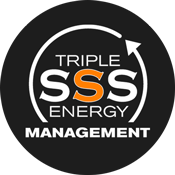Virginia-based utility company Dominion Energy is building a massive ship to install offshore wind turbines.
The power company, offshore wind developers, and clean energy advocates say construction of the vessel, which will be sea-ready in 2023, will be a watershed move for the offshore wind industry.
The 472-foot ship being built in Texas will be the first U.S.-flagged offshore wind installation vessel. Importantly, that means the ship will comply with the Jones Act, a century-old law that requires ships moving U.S. goods between U.S. ports to be built and crewed domestically.
Because there have been no U.S.-flagged installation vessels to date, developers of the few offshore wind pilot projects off the East Coast have had to find complex workarounds to move the massive turbine parts from port to the offshore lease areas where they are installed.
For its two-turbine pilot project, Dominion shipped the turbines from where they were manufactured in Europe to Canada before picking them up to transport down to the Virginia Beach waters to avoid staging in a U.S. port, said Mark Mitchell, senior vice president of project construction.
While workarounds like that are manageable for the handful of turbines the United States has in the water right now, it likely won’t be sufficient to scale the industry to the level that utilities, developers, states, and the Biden administration all want it to reach.
“The way that you build a two-turbine or five-turbine project is a lot different than how you build a 60‑, 80‑, 120-turbine project. You can’t do some of the gymnastics you might be able to do with a smaller project,” said Claire Richer, federal affairs director with the American Clean Power Association.
Biden has called on the U.S. to deploy 30 gigawatts of offshore wind by 2030, a massive scale compared to the 42 megawatts of turbines currently in the water. Collectively, states up and down the East Coast have already issued procurements for nearly 30 GW of offshore wind by 2035.
Utilities have commercial projects many times the scale of the two U.S. pilot projects in the works. For example, Dominion has two roughly 600-foot pilot turbines operating off the coast of Virginia Beach, but it has plans to build 180 turbines by 2026, each 200 feet taller than the pilot project.
Without the Dominion vessel, the utility and other offshore wind developers would likely have to use U.S. feeder barges to load turbine parts at ports, transport them out to sea to a foreign-flagged installation vessel, and load them onto that vessel all before construction can begin.
Having a U.S.-flagged vessel “greatly simplifies the construction process offshore,” said Michael Ausere, vice president of business development for Eversource Energy.
Eversource Energy, along with Orsted, agreed to be the first charter for Dominion’s ship, installing the turbines for the companies’ joint Revolution Wind and Sunrise Wind projects. Off the coast of New England, those projects will power nearly 1 million homes in Rhode Island, Connecticut, and New York.
Indeed, the feeder barge approach “has never really been tried at scale before,” said Francis Slingsby, Orsted’s head of commercial and market development for U.S. offshore. Orsted has installed more than 1,000 offshore wind turbines globally, and Slingsby called the installation vessels a “tried and tested solution.”
After the vessel services the Eversource and Orsted projects, it will service the construction of Dominion’s commercial project off the coast of Virginia Beach, which it expects to power 660,000 homes.
In total, Dominion Energy is spending roughly $500 million to build the installation vessel. The utility says building the ship will employ 1,000 workers in Texas at peak construction. It’s a significant investment for the still-burgeoning offshore wind industry in the U.S.
“I think it goes to show how the market for offshore wind is really building and how there’s a lot of confidence building up in the market right now,” Richer said.
A U.S.-flagged installation vessel will also direct more investment to port infrastructure, as East Coast states jockey to become offshore wind hubs.
The homeport of Dominion’s vessel will be Hampton Roads, Virginia, already a hub of the maritime industry and the largest Navy base. Dominion’s project managers see an opportunity for Hampton Roads to become a nerve center for offshore wind.
In addition, Dominion officials say the U.S.-flagged installation vessel will help drive even greater investment in the U.S. offshore wind industry, rather than leaving Europe or China as the dominant player.
“When we look at the supply chains for solar, which in the U.S. has been deployed to a greater degree than offshore wind, we don’t want to replicate that supply chain that is almost entirely non‑U.S. based,” said Katharine Bond, Dominion’s vice president of public policy and state affairs.
“We want to make sure we maximize the domestic supply chain benefits as we deploy offshore wind and bring with it so many other benefits, environmental and otherwise,” she added.

